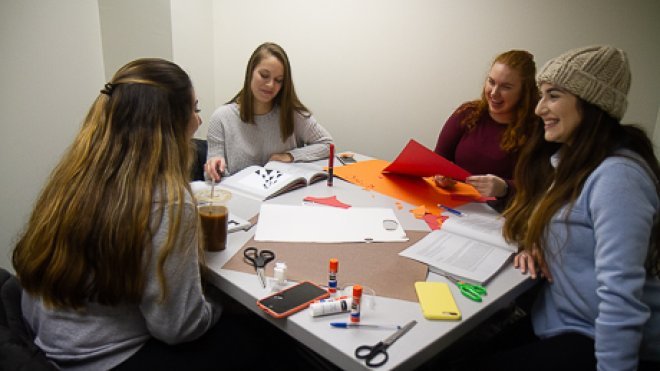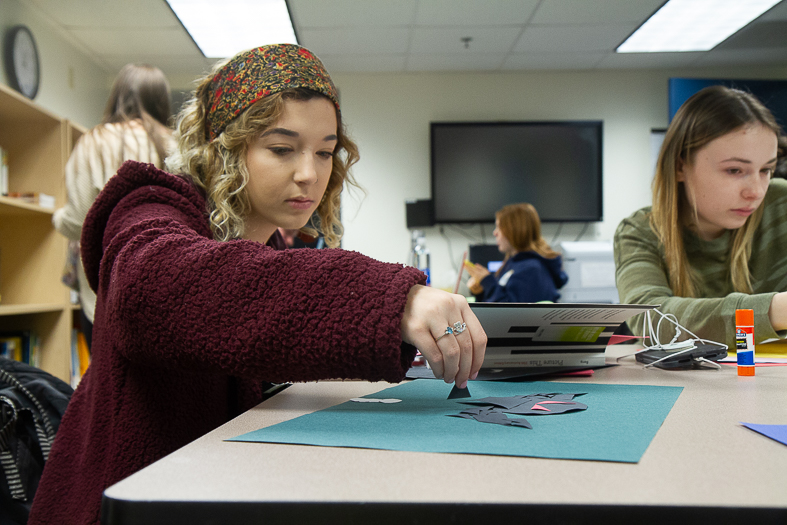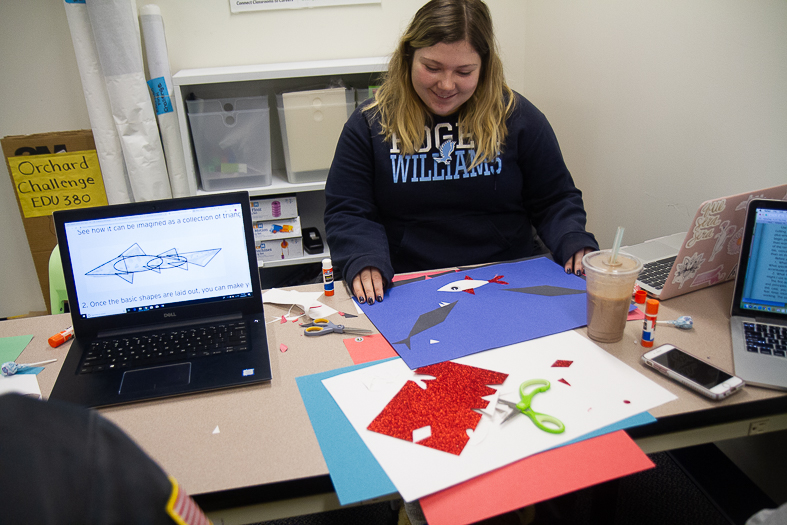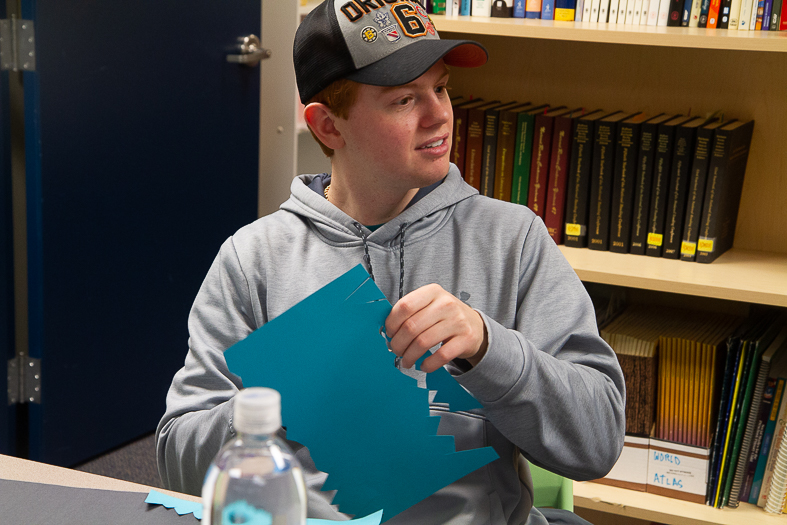In Children’s Literature Course, Students of all Majors Learn Unexpected Skills for the Future
In her course, "Children and Books," professor Rachel McCormack demonstrates the value of experiential learning for future educators and teaches students of all majors that picture books are not just for kids

BRISTOL, R.I. – The education curriculum lab is a sea of colorful construction paper, glue sticks, scissors, and students reliving childhood memories of arts and crafts. At their tables, they cut out shapes and paste them onto poster board. Some work in groups, planning out their designs together, like senior marketing majors Justin Mills and Ryan Stefens.
“We either have to pick a shark or a bird and make it attack something,” explains Mills. “So I think we’re going to do a shark attacking a school of fish. We can only use shapes and we can’t trace anything beforehand. We'll see how it comes out!”
Though invoking a sense of kindergarten joy and wonder, Professor of Literacy Education and Chair of Elementary Education Rachel McCormack’s “Children and Books” class also explores the complexities of picture books through an adult perspective. The course is having a profound impact on students of all majors, from education to psychology to marketing.

For education majors and future educators, McCormack is modeling the importance of experiential learning.
“It’s not arbitrary. Everything, from the color of the end pages, to the illustrations on each page, the way the illustrations match the text, are such purposeful decisions. I could tell them that, but they have to experience it on their own,” she says. “I always try to model good teaching so that students who will be teaching will say ‘I saw my professor teach this way. I like to make the class as interactive as I can.”
This is why she has them in the lab today. The students are using Molly Bang’s, Picture This: How Picture Books Work, to learn how certain shapes, colors, and styles evoke certain emotions.

“I want them to be able to look at a picture book and say ‘oh I know why that one thing is red, and everything else isn’t,’ or ‘I know why that’s at a diagonal, because they’re trying to show movement,” says McCormack.
Understanding the impact of imagery and text is important, not just for the education majors in the room, but also for those coming from the business school.

As a marketing major and graphic design minor, Zach Gagnon `19 brings an interesting perspective to discussions of picture books. Just like graphic designers looking to market a product, picture book illustrators must understand the impact of imagery on their audiences. “Using colors to express meaning is definitely something I recognize in this class,” says Gagnon.
Along with analyzing these visual choices, students have also been surprised to see how much they can learn about the world through children’s literature.
For example, they recently read a book by Spokane-Coeur d'Alene-American author Sherman Alexie, which delves into the realities of life for a teenage boy on a Spokane Indian Reservation. Alexie uses text and cartoon drawings to tackle challenging subjects and dispel common misconceptions about Native Americans.
“It shows how much you can actually learn from children’s books,” says accounting major Rachel Gottschalk `19.
McCormack believes children’s literature has a lot to teach us about culture. For their final projects, the students must choose an award-winning book that focuses on a specific culture. They will present on they have learned about text, illustrations, award criteria, and multicultural children’s literature.
“Picture books are not just for kids,” says McCormack. “You can learn anything.”